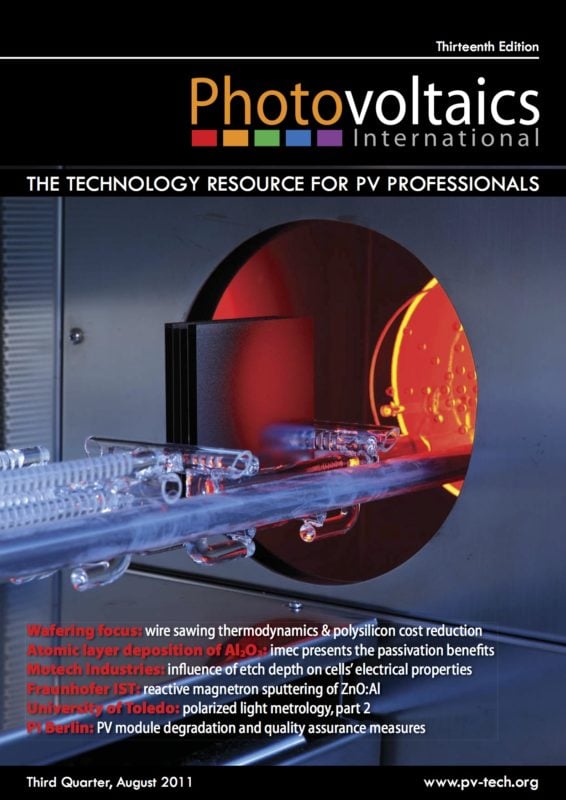By Subhendu Guha, Chairman Emeritus, United Solar Ovonic; David Cohen, Professor, University of Oregon; Eric A. Schiff, Professor, Syracuse University; Paul Stradins, Scientist, National Renewable Energy Laboratory (NREL); P. Craig Taylor, Professor, Colorado School of Mines; Jeffrey Yang, Senior VP of Technology, United Solar Ovonic
The low material cost and proven manufacturability of thin-film silicon has made this material very attractive for low-cost photovoltaics (PV). It is widely recognized that increasing the light-to-electricity conversion efficiency will play a critical role in expanding the acceptance of these products. The first commercial thin-film silicon solar cell consisted of a singlejunction structure using amorphous silicon; multijunction cells incorporating amorphous silicon and silicon germanium were later used to further improve efficiency. An even later development was the incorporation of nanocrystalline silicon as an active layer. This very interesting material, which consists of nanocrystallites embedded in an amorphous tissue, has already given rise to a significant increase in the performance of these multijunction cells. Most recently, some very innovative light-trapping concepts have been suggested that can improve the efficiency further. Both these topics, however, have required expertise not readily available within one organization. A thin-film silicon team has been established under a US Department of Energy’s Solar America Initiative programme to address the material, device and manufacturability issues for this technology. United Solar Ovonic is the team leader, with Colorado School of Mines, University of Oregon, Syracuse University and the National Renewable Energy Laboratory (NREL) as members. The collaborative effort has resulted in a new understanding of the material and devices; innovative light trapping ideas were developed, and worldrecord initial efficiencies of 16.3% for small-area cells and 12% for large-area encapsulated cells were reached. Of equal importance is United Solar’s decision to introduce this technology into production. This paper presents the important technical results obtained under this programme and will discuss future directions.



